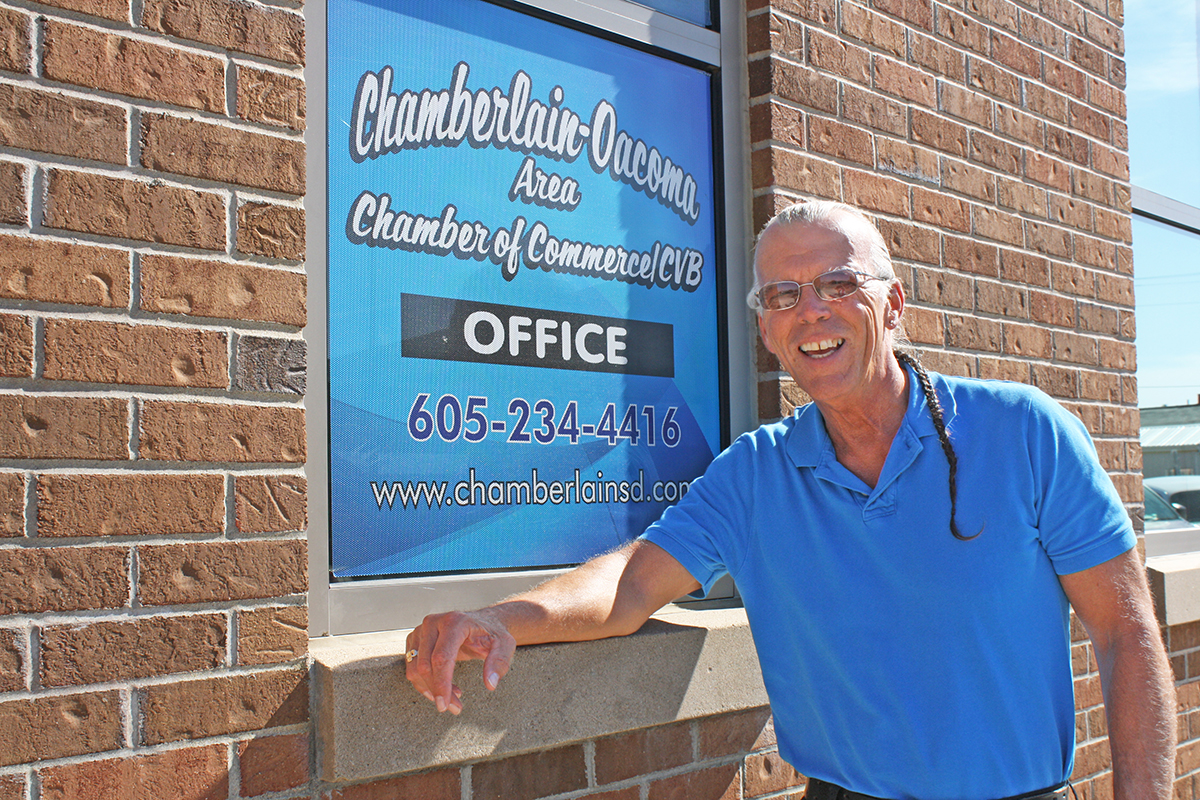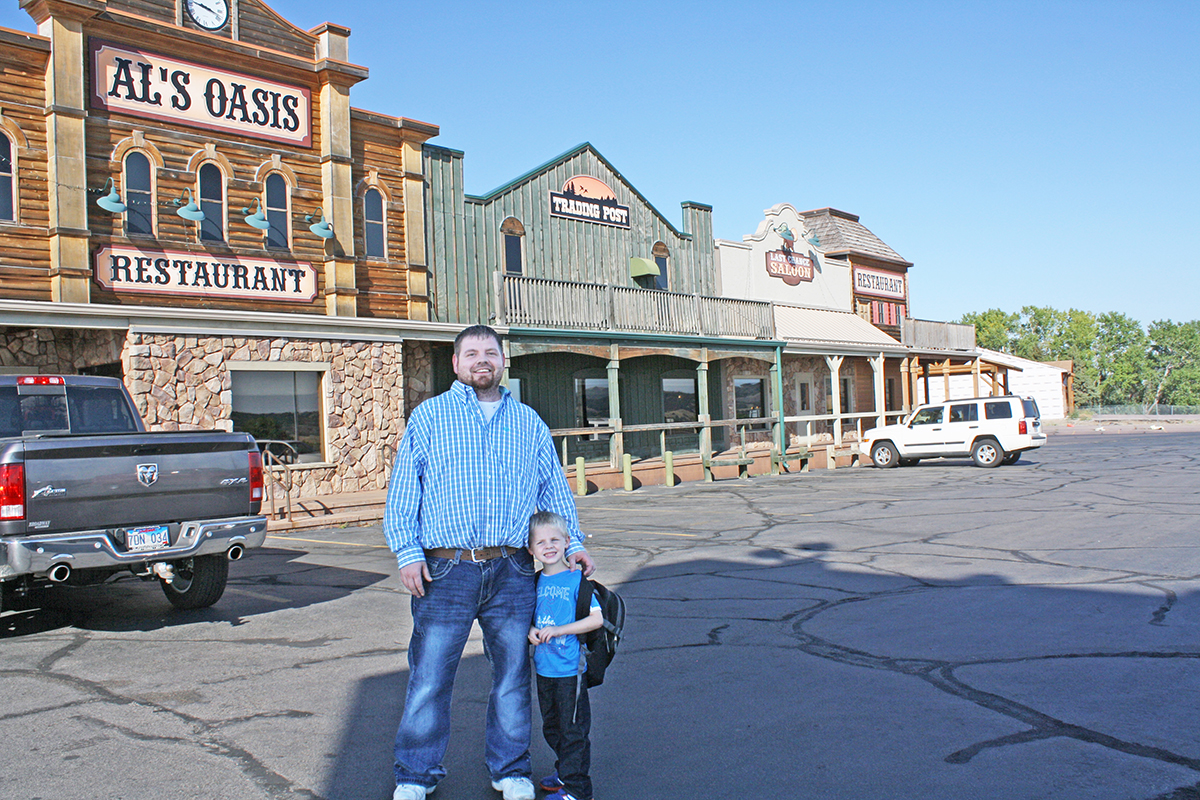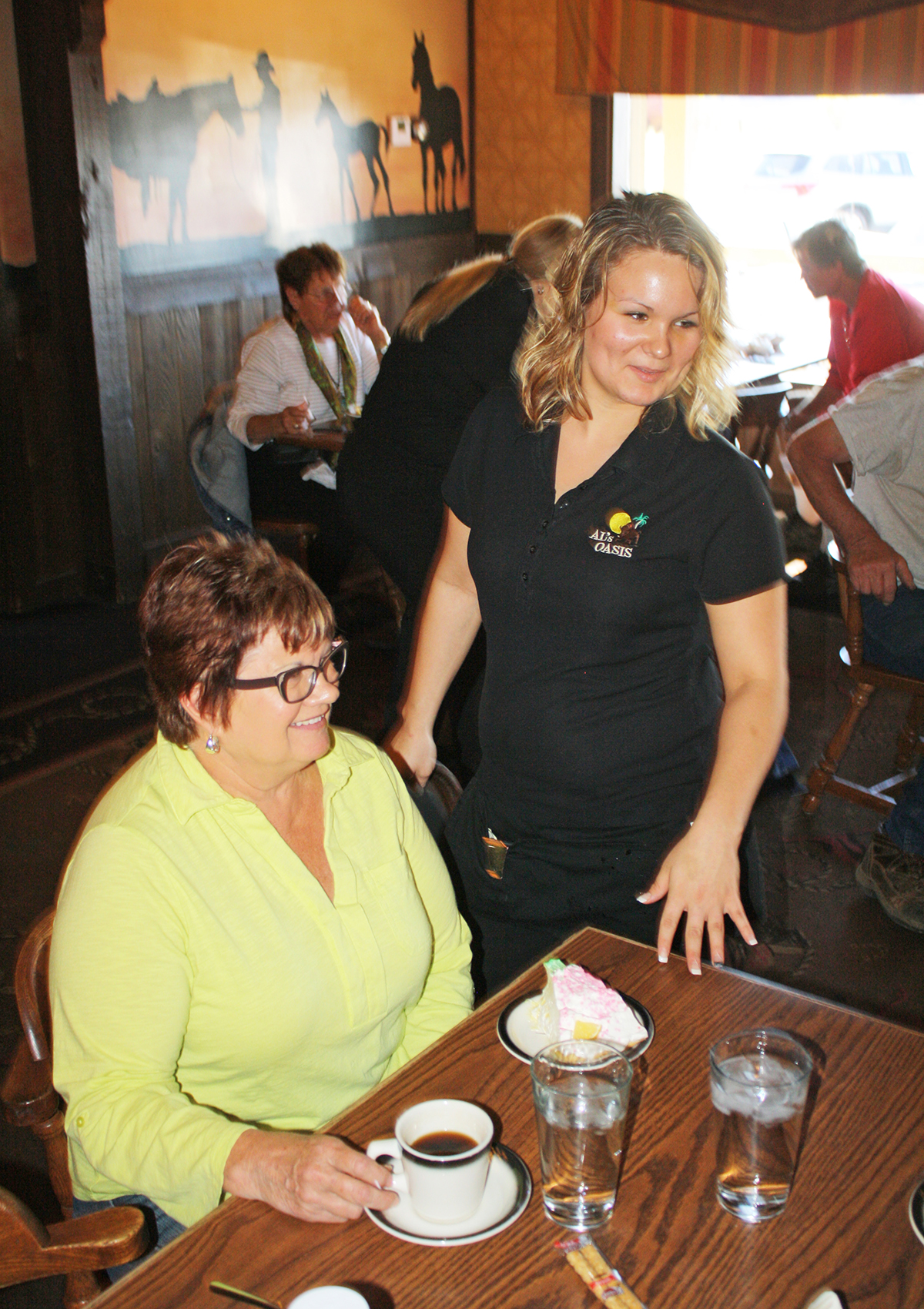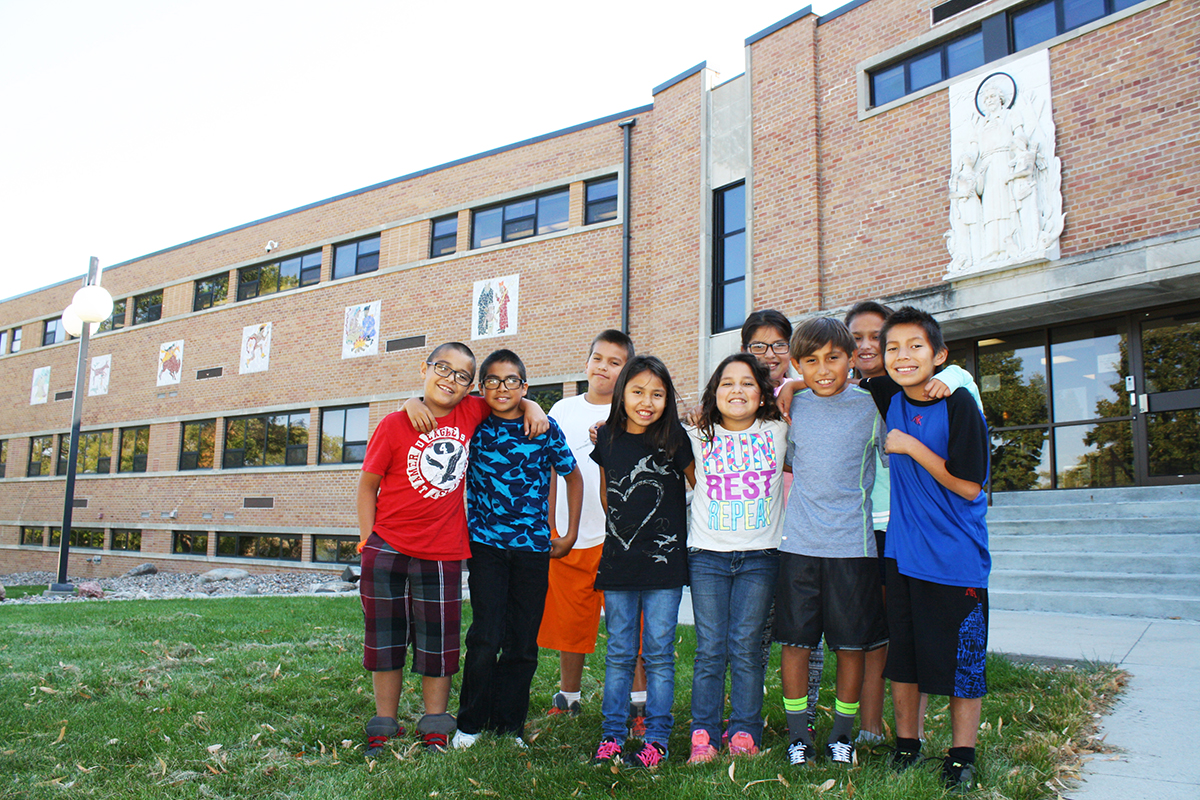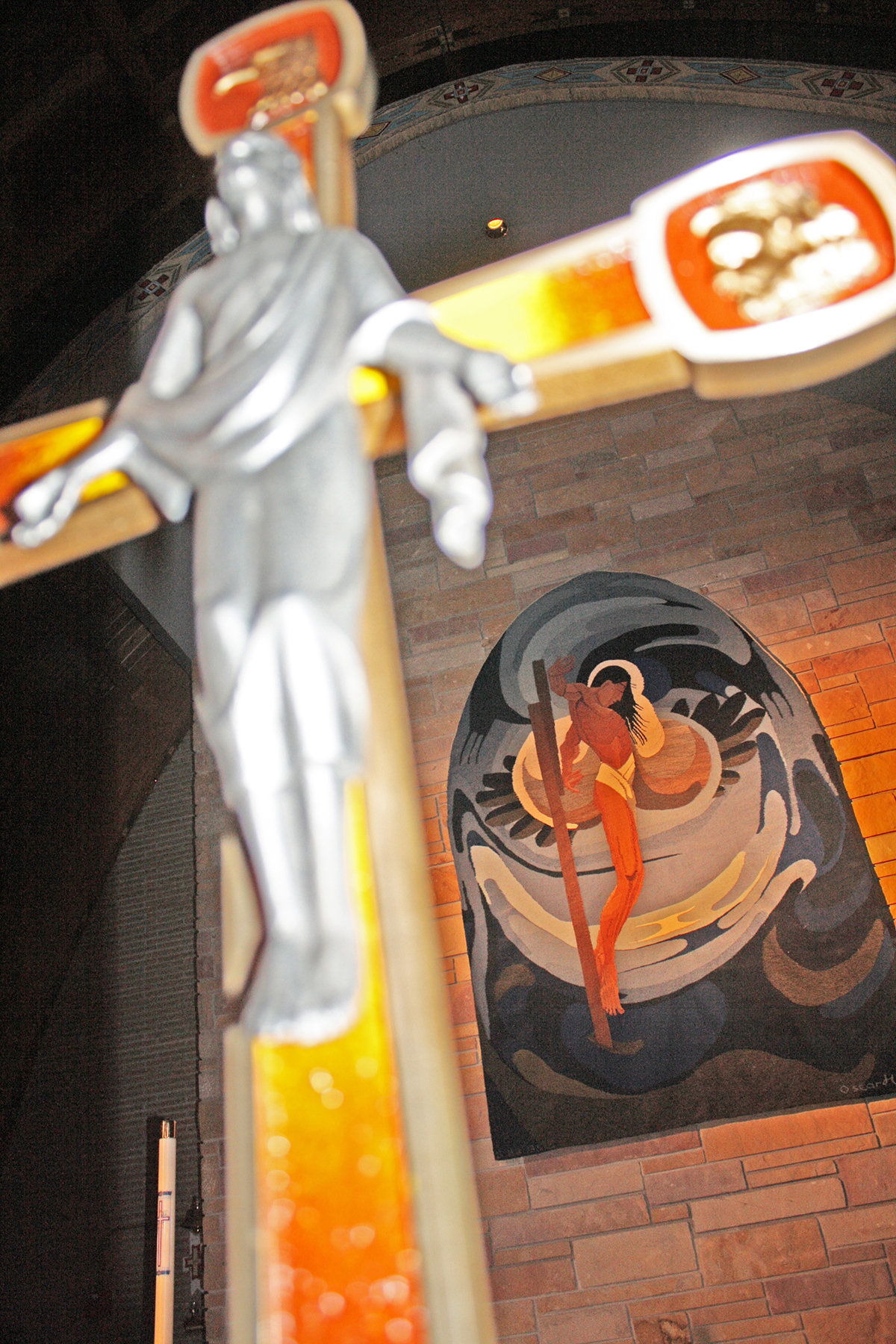In the heart of South Dakota, nestled into the banks of the Missouri River, two small towns make up one community.
Chamberlain and Oacoma have fewer than 3,000 people combined as of the 2010 Census, but together they have advantages over similarly sized communities in the region. The Chamberlain-Oacoma Chamber of Commerce lists 131 businesses on its webpage, ranging from local mom-and-pop shops to fast food chains to tourism icons.
“You don’t expect there to be so much activity” in a town that size, but the community’s proximity to two reservations and smaller neighboring communities means 10,000 people regularly depend on local amenities, according to Chamber Director Mike Normile.
“We rely on … that trade area,” Chamberlain Mayor Chad Mutziger said. “A lot of those people come here for employment … but even with that, businesses are still desperately in need of help. We have the jobs, (but) the employees to fill them are hard to find. … Chamberlain-Oacoma is different than a lot of towns this size. If you look at just the number of hotels and restaurants, to make those alone in this community go, that’s a ton of employees.”
Oacoma offers accommodations for more visitors than its own population. At last count, there were 330 hotel rooms, before factoring cabins and camping spots.
“Our little town of (390), in the peak of the summer, operates—water- (and) sewer-wise—as … a town of 3,000,” Oacoma Town Board President Mike Schreiber said. “Oacoma wouldn’t be what it is without the service industry. We built a convention center and a community center. Our streets are all concrete. You aren’t going to find many towns our size … that are able to do that kind of stuff.”
The towns accomplish few projects independently. Situated just inside two separate counties—Chamberlain is in Brule County, and Oacoma is in Lyman—the towns share a school, police and fire departments, ambulance service, summer recreation programs, golf course, development corporation and chamber of commerce. But each utilizes separate electrical and telecommunications utilities and provides its own water.
Nearly 20 years ago, Oacoma simultaneously built a community center that doubles as its town hall, and a provided a business improvement district to build the Bridges Conference Center at Cedar Shore Resort.
“Our borrowing power wasn’t able to accommodate … both projects at the same time, (so) we needed to get creative in our funding,” Schreiber said. “We support the (shared) chamber and the development corporation and the visitor’s bureau, and Chamberlain was very willing to step up and take over that portion of that contribution for a period of time, while we were able to get those projects done … and paid for.”
A few years ago, Chamberlain built its own community center and a new pool at the same time.
“We scratched their backs, and they scratched ours—they got their projects done, and then we got our projects done, and we’re moving forward,” Mutziger said. “It’s kind of a smaller version of Minneapolis-St. Paul. Really, it’s a good partnership. It works for both of us.”
Complicated geography
The two towns do have different strengths.
“Once you cross the river into Oacoma … the businesses on that side of the river, for the most part, are hotels, restaurants and gas stations. … (There are) probably four retail businesses,” Normile said. “Chamberlain, on the other hand, is much more than that. There’s a really busy retail business area, both down in the valley and up on the hill.”
Though the interstate and river bring thousands of people to the community annually, the two complicate the geography of the towns a bit. The area has four interstate exits:
- Exit 265 leads immediately to a small area of businesses, including a hotel, gas station, Dairy Queen and two recent additions—Bomgaars and Shopko. Almost a mile down that road—King Street—is the heart of Chamberlain, at the intersection of Main and King streets, just two blocks from the river.
- Exit 264 takes visitors to the state rest stop, visitor center and the newly installed Dignity statue to the south of the interstate, and the local hospital, school, several churches and another residential area to the north.
- Exit 263, or “Welcome West,” goes to an area showcasing the South Dakota Hall of Fame and South Dakota Veterans Memorial, as well as a clinic, gas station, Pizza Hut, and Taco John’s, then a residential area of Main Street that also leads to the Main-King intersection.
- Across the river, Exit 260 goes to Oacoma, and takes visitors to a hotels, campgrounds, gas stations, antique shops and the famed Al’s Oasis.
And it’s all just as confusing as it sounds, to anyone not familiar with the area.
“I’ve seen it happen where (visitors) will get off any of our four exits and think they are at the wrong place and head back out of town,” Normile said. “We need to make sure that people realize we do have a vibrant business district downtown—they just have to keep going.”
The local governments and Chamber are working to improve signage, as well as getting creative in the ways in which they market the area.
In September, the Fall Festival included a children’s scavenger hunt that required signatures from super heroes strategically placed in all four parts of the community. Each area also hosted its own set of activities, to get people to stay a while.
“There are ways to tie them together,” Normile said. “You just have to get creative in how you do it.”
A traditional I-90 stop
In days gone by, Chamberlain-Oacoma was about the only stop between Mitchell and Rapid City, so travelers stopped out of necessity.
“Now, I think people have done it for so long that it’s just kind of a ritual for them,” said Craig Gill, general manager of Al’s Oasis. “A lot of people meet up here just because they’ve done it for years.”
According to Ron Madison, general manager of Cedar Shore Resort, Chamberlain-Oacoma is a destination for some visitors.
“The interstate does bring us a lot of business, but most of it is business that we go out and get—we go out and attract it for the meetings, for the weddings, for fishing, for hunting—it’s a lot of those things,” he said.
Cedar Shore Resort was built in 1995, after a study indicated that a centrally located convention center could accommodate most any events held annually in South Dakota. In the summer months, 140 people—5 percent of the combined population of Chamberlain and Oacoma—work at Cedar Shore in some capacity.
“If you’re coming from the east and from the west, it’s the perfect middle spot,” Madison said of what he considers a unique venue for the Dakotas. “You can come here and (do your business during the day) and then relax. … Not a lot of places can do outside entertainment, outside beverage, outside food, and have the river” as the backdrop, with weekly entertainment by live bands.
In large part, the locals owe the amenities they enjoy to visitors. Madison said businesses are very accommodating to Cedar Shore guests, staying open into the later evening hours.
“They can tell when there’s a convention in town, because Main Street is filled with people shopping and eating,” Madison said.
Many visitors stop to take part in a 97-year-old tradition that could be called the “five-cent investment.” Since 1919, Al’s Oasis has attracted coffee drinkers for a nickel a cup.
Albert and Dena Mueller opened their grocery store in 1919. In 1950, their son, Alfred, moved the store to its present location along Highway 16—which runs nearly parallel to I-90, linking Chamberlain and Oacoma by way of a two-laned bridge—and added a 10-stool lunch counter, where Veda Mueller fried hamburgers and baked apple pies to go along with that iconic five-cent coffee.
“Some of the food has been revamped a little bit, but the soul of it is still there,” said Gill, who is employed by Regency Hotel Management, the Sioux Falls-based company that purchased both Al’s Oasis and Cedar Shore Resort in 2013. “A lot of the food is still what they’ve been doing for years. … The homemade pies are made every single day.”
On a busy day, Al’s Oasis, which also has a grocery store and gift shop, can see 5,000 visitors.
“It’s kind of a badge of honor for (our cooks) when they’re on a shift if they’ve (served) 700 in a day,” Gill said. “In a typical day in July, we’ll do 1,200 to 1,800 meals served. That’s not counting all the people who stopped just to use the restroom and grab a drink or coffee.”
Stronger through diversity
Chamberlain and Oacoma’s Census data shows Native American populations of just 14 percent and 6 percent, respectively, but those numbers don’t reflect their proximity to the Crow Creek and Lower Brule Indian Reservations, nor the presence of St. Joseph’s Indian School.
Folks in Chamberlain-Oacoma say their diversity makes them a stronger community.
“It provides us with a level of understanding that most communities don’t have,” Schreiber said.
“We need them as much as they need us,” Mutziger agreed. “If they want jobs, we welcome them.”
The Chamberlain School District—where the demographic is 40 percent Native American—works to mingle the two cultures by teaching and celebrating Native American culture, hosting an annual powwow, and engaging its Native American Club.
“The school does a very good job,” Mutziger said. “When (students graduate) … they have an appreciation for different cultures, where someone who maybe isn’t exposed to it the way that our kids are maybe doesn’t understand and appreciate other cultures and working with different cultures.”
School Superintendent Debra Johnson visits each classroom at least three times each year, and each building daily.
“What I see is kids getting along, kids learning together (and) playing together out on the playground, having lunch, being involved together in activities,” she said. “We look at it more as bringing everyone together and going to school and learning. That’s what it’s about.”
Three years ago, however, there was controversy, when Native American students requested an honor song be played at graduation. After a series of discussions among the school board, the request was declined.
“The board wanted to keep the tradition that the graduation ceremony has always been,” Johnson said. In “past years, we’ve kept our graduation program very traditional, in terms of being Chamberlain Public School system. That was, to me, the ultimate, deciding factor—keeping the tradition the same as it has always been.”
The honor song is played at the annual powwow and a separate feathering ceremony before graduation.
“There are many places where we have incorporated the honor song,” Johnson said. “We just don’t have it at the actual graduation ceremony.”
School construction
Facing record enrollment in cramped, aging facilities, the Chamberlain School District is in the early phase of a construction project that eventually will put all classrooms and offices in one place, rather than spreading them over a few miles.
“We’re really glad we’ve been able to move forward with the project” to address “some space needs,” Johnson said of the $4.2 million project, which will move the district’s administrative offices from an older, two-story house across from the downtown elementary building to the high school facility on the hill at the edge of town. This project also includes the addition of gymnastics and wrestling rooms, a weight room, and space for career-technical coursework. The project was already being discussed when Johnson was hired seven years ago, but “it’s really starting to take some shape now.”
The school’s multipurpose room “is one of the reasons we’re doing our building project—because it is truly ‘multipurpose.’ It’s is lunch, PE, assemblies, gymnastics—and the gymnasts have to take their equipment up and down every day. Now, they will have a space where they don’t have to do that.”
This year, 525 students from the 924-square-mile area that encompasses Chamberlain, Oacoma, Pukwana and Ft. Thompson convene at the district. The current elementary building was built on a hillside, so it is split into three separate floors that separate off of a single staircase from the center of the main floor of the building.
“It’s really kind of interesting to be here in the morning, when everyone comes off the playground—they go this way, that way—they just know where they are going, and the teachers don’t have to really organize it. It’s very efficient, but it’s really different,” Johnson said. “We get so much exercise around here.”
Earlier this fall, because of the school’s commitment to student and staff wellness, the school nurse traveled to Washington, D.C., to accept the “Let’s Move” Health Schools Award. The award was based on a three-year process that involved development of a healthy schools committee that organized a family fun night on parent-teacher conference night, placed healthy food baskets at concessions stands, replaced “junk foods” with healthier vending options, revamped the lunch program in accordance with recently adopted national standards, screened staff for blood pressure issues, organized blood drives, and enhanced regular curriculum with wellness concepts, among other things.
Johnson said the schools’ libraries are major focal points.
“Kids love to read, and we just want to keep instilling that in them (with) little incentive programs,” she said. So, purposefully, the libraries have been made into gathering places. The teacher of the week is announced “right there in the library, which shows the importance of that space, so it’s a great place to gather.”
- Main Street in Chamberlain is one of a handful of business districts within the Chamberlain-Oacoma community. Photo by Wendy Royston/Dakotafire Media
- Oacoma Town Board President Mike Schreiber and Chamberlain Mayor Chad Mutziger say that their towns are one community. Photo by Wendy Royston/Dakotafire Media
- Mike Normile, director of the Chamberlain-Oacoma Chamber of Commerce, said there’s no shortage of jobs in the area he serves. Photo by Wendy Royston/Dakotafire Media
- Ron Madison, general manager of Cedar Shore Resort in Oacoma, S.D., says Chamberlain-Oacoma is both a destination and a layover between the Black Hills and Twin Cities. Photo by Wendy Royston/Dakotafire Media
- The food and experience at Al’s Oasis in Oacoma hasn’t changed much in 97 years, despite being sold to Regency Hotel Management in 2013, according to General Manager Craig Gill, pictured here with his son, Liam. Photo by Wendy Royston/Dakotafire Media
- Chamberlain Public School Superintendent Deb Johnson (front, right) is pictured with students Will Mahnke, Fiona Bishop, Dodge Knippling and Jacob His Law at the school. Photo by Wendy Royston/Dakotafire Media
- Julie Mertz, left, of Chamberlain, S.D., shares homemade pie (served here by Shannon Dolezal) at Al’s Oasis in Oacoma every Saturday with friends, and often brings out-of-towners there to dine. Photo by Wendy Royston/Dakotafire Media
- The Oacoma Community Center was built with support from the town of Chamberlain. Photo by Wendy Royston/Dakotafire Media
- Amanda Jones has opened a business called The Butter Churn Bistro in Chamberlain, S.D. Photo by Wendy Royston/Dakotafire Media
- Jona Ohm, public relations specialist, and Robyn Knecht, residential coordinator, are among about 270 adults who work with 200 students at St. Joseph’s Indian School in Chamberlain, S.D. The residential work varies depending on what the students’ needs are. ”It’s mostly the day-to-day life and managing those independent learning skills that, when you leave St. Joe’s you can handle all of that,” according to Knecht. Photo by Wendy Royston/Dakotafire Media
- Fourth-graders at St. Joseph’s Indian School share some smiles. Photo by Wendy Royston/Dakotafire Media
- “Indian Christ,” a tapestry from an original painting by Oscar Howe, hangs over the altar in Our Lady of the Sioux Chapel at St. Joseph’s Indian School. Photo by Wendy Royston/Dakotafire Media
- Dale Lamphere stands before his creation, “Dignity: Of Earth and Sky,” near Chamberlain, S.D. Photo by Wendy Royston/Dakotafire Media
- The Missouri River and a county line run between Chamberlain and Oacoma in the heart of South Dakota, but they are really one community on both banks of the recreationally rich area. Photo by Wendy Royston/Dakotafire Media
Overcoming history
Diversity in the Chamberlain School District is enhanced by the incorporation of students from St. Joseph’s Indian School into the high school population. The nearly 90-year-old boarding school is home to 200 Native American students in first through 12th grades, with the high school students bused to the public campus during the day.
“That partnership allows a lot more community involvement,” as well as allows for a fuller educational experience for St. Joe’s students, said Jona Ohm, public relations specialist for the school. “We only have about 50 high school students. … We can’t … offer chemistry and physics and Spanish and German and wrestling and basketball all on our own … so having such a great district so close by, with such opportunities and all those other students to be a part of everything that is happening in that high school experience, has been a great partnership.”
St. Joseph’s Indian School was founded in 1927 by a group of Catholic priests who had originally been looking for funding sources for the work they were doing in other places—particularly Germany. St. Joseph’s was one of many boarding schools that forced assimilation to the dominant culture, practices that today are recognized for the harm they caused to Native American students.
Today, students are brought to the school on their families’ accord.
“The students that are here are here because their parents or guardians want them to be here,” Ohm said. “That old boarding school stigma of the past just doesn’t exist anymore at St. Joseph’s Indian School. We’re very blessed to work with families who want to be here, kids who want to be here.”
Students are offered both Catholic and traditional Lakota spiritual opportunities for personal growth and development.
“In this place, two worlds come together. This isn’t a traditional Catholic sanctuary, but it isn’t a traditional Lakota place of ceremony. But it’s not mutually exclusive, either,” Ohm said, in reference to Our Lady of the Sioux Chapel on the school’s campus.
The chapel shows the melding of two cultures: The stained glass windows highlight moments in history that united Catholics with the Lakota people, from the first two permanent Native American deacons in 1975 to the canonization of Kateri Tekawitha, the first Native American saint, in 2012. But the most compelling symbols of the two cultures converging are the icons in the church’s sanctuary. Our Lady of the Sioux is a Lakota depiction of Mary, and the Indian Christ originally was a painting by Oscar Howe that now is a tapestry behind the altar. On each pew is engraved with a triangle, representative of the Christian trinity, but also of the tipi, which represents home in Lakota culture. Even the school’s name is representative of the cultural compilation.
“We see ourselves as caregivers of these children, just like Joseph was a caregiver to Jesus,” Ohm said. “We have found in surveys and conversations with families that it is important that their students have a spiritual education, as well as an academic education.”
Though all of the children on campus attend Mass every Sunday and Holy Day, the school also integrates Lakota tradition into that experience.
“We try to make our powwow very educational, to introduce people to the culture and to the traditions … in a very respectful and easy-to-understand way,” Ohm said, adding that the powwow is “a big, old family reunion” that is “better than Christmas.”
The school provides accommodations for an average of 400-500 members of the students’ families and others for the weekend.
“We work very hard to make sure that we have ways for families to stay involved,” Ohm said, adding that guardianship of the children remains with their families. “The safety that we can provide, the three meals a day that we can provide, the basketball shoes and the extra-curricular activities, that’s all fine and good, but we’re never going to replace their families, and we don’t want to.”
Safety and security likely are factors in St. Joseph’s graduation rate—90 percent among all students who attended the school and were of age to graduate between 2011 and 2014. That compares to 87 percent for all students in the state of South Dakota during that time period, and 50-60 percent of Native American students.
“We’re getting something right … putting those building blocks in place, so that wherever they go when they leave St. Joseph’s … they can go learn anywhere,” Ohm said. But, because many of the students spend their summers in households that struggle to meet basic needs, coming back in the fall can be difficult. “There’s a definite settling-in period, because they’re just not used to having everything they need in some cases. I think … just removing that stress” helps kids flourish academically and socially.
Two years ago, St. Joseph’s received negative press for its pursuit of funding through a direct mail campaign that shared stories of students that CNN said were fictitious. Ohm said the network news outlet did not share the whole story with viewers.
“Our stories are about children who attend school here—these are real stories of real hardships that are happening in our state. We change their names, because it’s ridiculous to think that you should tell the whole world that this 7-year-old has this (difficult home life), so we work to respectfully tell their story in a real way … so that people understand why we need to be here, why we’ve been here for 90 years, and respect their privacy and their right to just be who they are.”
Ohm said staff in her office receive stories of children on the campus from the school’s counselors. The children are identified by only age and gender, and development staff add ficticious names and change some identifying details to use those stories in their fundraising campaigns.
“Direct mail is a science, and if we weren’t able to send direct mail, we would have to close our doors,” Ohm said. “Our average donation is about $22, and it comes from moms and dads and grandmas all over the United States who think that we’re doing the right thing.”
Those small donations added up to $67 million in 2015, providing $50,000 worth of comprehensive services to each of St. Joe’s students. It’s an investment Ohm hopes one day will mean she and the rest of the campus’s 270 employees won’t have jobs.
“More studies are coming out all the time that are identifying the correlations between physical and mental health. … To put all of those pieces in place, we can truly provide correct and outstanding service for every child we work with, so in 20 years, when these children have children, those children won’t need to be at St. Joseph’s Indian School. It’s pretty exciting stuff, even at the cost of working ourselves out of a job,” she said. “Our mission is truly ‘caring for the whole child—mind, body and spirit.’ They’re physically taken care of, they know they are safe, and one of our best alumni quotes is, ‘I know who God is, and I know no one is allowed to hurt me.’ That’s what they took away from our school after the years that they spent here, and that is changing the future of the world that we live in.”
 Dakotafire Get your spark here.
Dakotafire Get your spark here.





